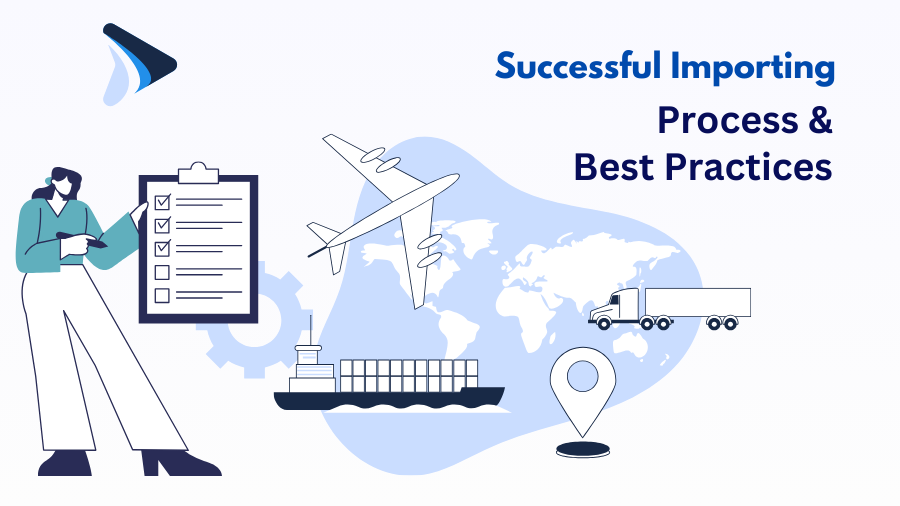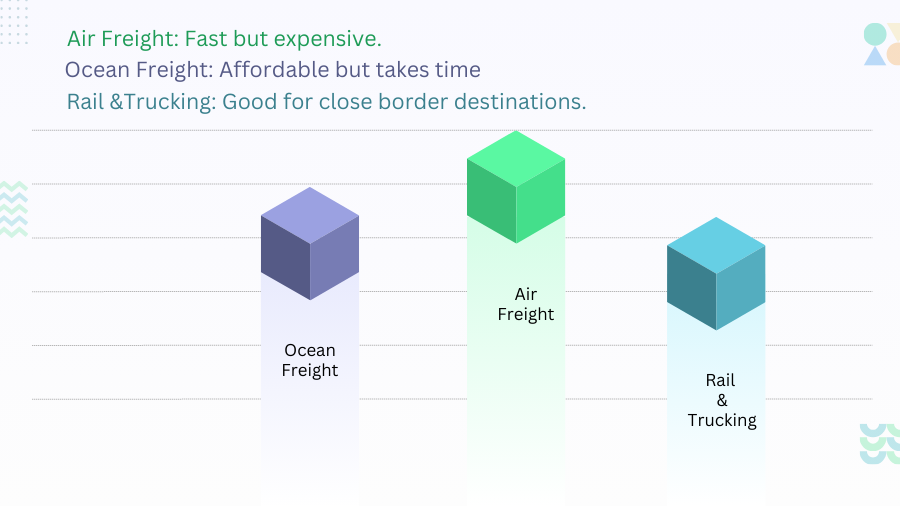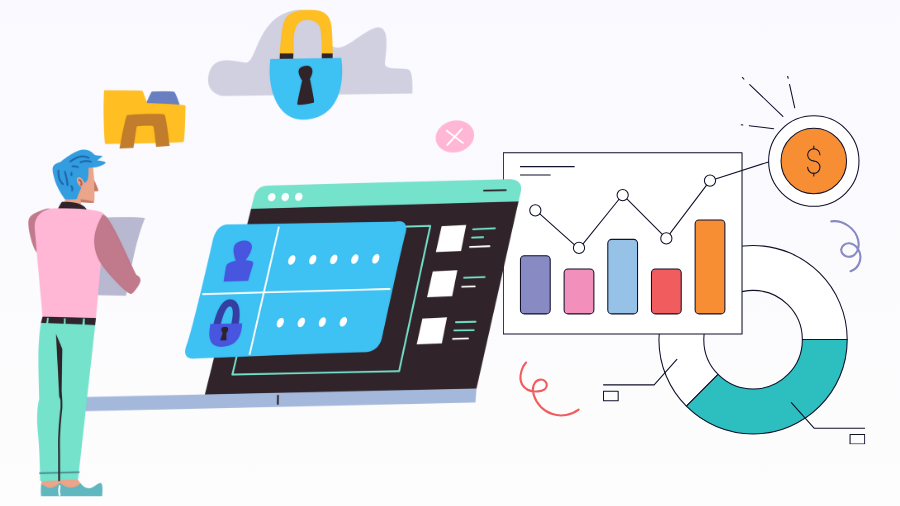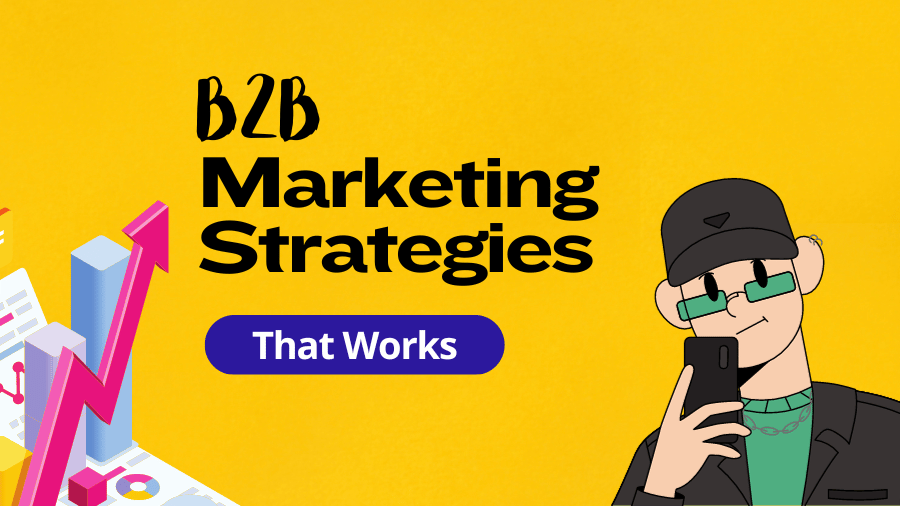
Importing is an essential part of global business operations. Executing the importing process correctly can significantly impact your success. Following best practices, understand import rules, supply chain management etc will help your import operations run smoothly.
Import is lot more than just “BUYING”. Importing requires careful planning and understanding of regulations. You also need to manage logistics while looking out for potential risks.
For importers, being organized and following best practices in importing is the key to global trade success. In this guide, we’ll share simple strategies to help you better understand the importing process.
Today, global B2B marketplaces like B2BMAP can make your importing process more convenient. These platforms connect international buyers with trusted and dependable suppliers. These platforms allow importers to submit their buying requirements, making it easier for exporters or suppliers to find the right buying leads. This connection streamlines the sourcing process and helps importers work with trustworthy exporters.
Table of Contents
In this article, we will discuss how to manage your import operations effectively. By following these best practices, you can avoid costly mistakes, save money, and improve product quality.
Import Regulations, Compliance, and Global Trade Standards
Every country has its own import regulations and requirements. knowledge on global trade compliance rules keeps your business safe and avoids unnecessary hurdles.
Important documents like Commercial Invoices and Bills of Lading are fundamental for ensuring compliance and efficient international trade processing. Building strong compliance practices keeps operations running smoothly and develop trust with buyers and suppliers, helping import export business run in a smooth and calculative manner.
If your company policies are transparent and well-documented on paper for everyone to see, then your operations will have more fluidity. Also, a more concrete trust is going to develop between the buyers and the suppliers.
Key Regulatory Bodies and Compliance Standards
Each country has specific agencies that oversee imports. For example:
- U.S. Customs and Border Protection (CBP) in the United States
- European Union Customs Union (EUCU) in Europe
These agencies create rules for product safety, labeling, and health standards. knowing these rules will allow you to introduce your products into the market with relative ease.
Common Compliance Requirements
Many countries have general requirements for imported products, including:
- Product Safety Standards: Ensuring your goods meet safety regulations.
- Proper Labeling and Packaging: Using the right language and measurements, and including necessary warning labels.
- Tariff Classifications: Every product has a unique tariff code that determines its duty rate. You need to get your classification right to calculate your import costs.
Staying Updated on Import Regulations
Since rules can change, it’s a good idea to regularly check government websites or work with customs brokers who know the latest compliance requirements. A customs broker can help you go through the paperwork and make sure your goods meet all standards.
Understanding regulations and compliance is the foundation for successful importing. By following these steps, you can prevent import delays, ensure smooth customs clearance, and save money.
Pre-Import Planning: How to Avoid Costly Mistakes
Good planning is everything when it comes to importing. From choosing responsible suppliers to budgeting for tariffs and transport costs, careful preparation reduces the risk of costly mistakes. Using global suppliers directory can help you to find reputable suppliers and minimize risks.
Pre-import planning also helps you better manage unexpected challenges, saving both time and money. Good pre-import planning involves careful research and preparation.
Here are some key steps to help you avoid common mistakes.
Conducting Market Research
Before you start importing, it is necessary to have a sound understanding of the target market. Research the demand for your product, your competition, and what your customers want. These information will help you decide if importing a particular product is the right choice for your business.
You also can use surveys, focus groups, or online tools to gather valuable insights about potential buyers of that product.
Suppliers background check
Finding a trustworthy supplier is crucial for successful importing. Not every supplier will meet your needs, so take your time to know and analyze them better; try to pay close attention to the details that are available to you carefully. Look for:
- Experience: Choose suppliers who have a good reputation in your industry.
- Certifications: Make sure they meet all necessary industry standards and regulations.
- References: Ask for references from other customers to see how reliable they are.
Request samples of their products to check quality before placing larger orders.
Pre-Import Planning
| Field | Description | Status (Not Started/In Progress/Completed) | Notes |
| Supplier Name | Name of the supplier | ||
| Product Description | Description of the product | ||
| Compliance Requirements | Necessary compliance documents | ||
| Shipping Method | Method of transportation (air, sea) | ||
| Estimated Arrival Date | Expected delivery date | ||
| Cost Estimate | Estimated cost for the import | ||
| Risk Assessment | Identify potential risks | ||
| Contingency Plan | Outline of backup plans |
B2BMAP's Simple Import Management Template
Check This Easy-to-Use Import Management Excel Worksheet!
Cost Analysis
Understanding all the costs involved in importing is essential. Besides the price of the goods, consider:
- Shipping Fees: These can vary based on how you choose to transport your goods and the distance involved.
- Customs Duties and Taxes: Be aware of the tariff rates for your products.
- Insurance: Think about getting insurance to protect your shipment against loss or damage.
Creating a detailed breakdown of all costs will help you avoid surprises and maintain your profit margins.
Creating a Contingency Plan
Even with the best planning, things can go wrong. That’s why having a contingency plan is important. Identify potential risks, such as supplier delays or regulatory changes, and develop strategies to address them. For example, maintain a list of good suppliers and alternative shipping options to ensure smooth operations.
By investing time in pre-import planning, you can make informed decisions, reduce risks, and set your business up for success. Taking these steps now can help you avoid costly mistakes later.
Building Strong Supplier Relationships
Developing solid, long-term relationships with buyers and suppliers helps you set clear expectations and avoid miscommunication. Consistent communication keeps both parties on the same pace, ensuring smoother trade.
Use B2B trade platforms to find a good number of suppliers to choose from. This way, you can start doing business with the ones that seem most promising. It enhances reliability and reduces delays. Strong relationships are essential in supply chain management because they help prevent disruptions and keep operations steady.
Building a relationship with exporters or your suppliers, on the basis of trust and support, will increase your chances of completing the importing process perfectly. Good relationships lead to better communication, improved reliability, and often better pricing.
Here are some important steps to help you develop and maintain these relationships.
Communicating Expectations
Clear communication is the foundation of any good relationship. From the start, talk about your expectations regarding quality, delivery times, and pricing. Make sure both you and the supplier understand the terms of the agreement. This helps prevent misunderstandings and ensures everyone is on the same page.
Establishing Contracts
It is mandatory to have a written contract. This document should outline all agreed-upon terms, including payment schedules, delivery timelines, and quality standards. A clear contract protects both you and the supplier and serves as a reference point if issues arise later.
Negotiating Payment Terms
Payment terms can have a big impact on your cash flow. Discuss payment options with your suppliers to find a solution that works for both of you. Some suppliers may offer discounts for early payments, while others might provide credit terms. Understanding and negotiating these terms can help you manage your finances better.
Monitoring Supplier Performance
Regularly reviewing how your supplier is performing helps maintain quality and reliability. Keep track of key metrics such as delivery times, product quality, and responsiveness to your inquiries. If any issues come up, address them directly and promptly. Providing feedback can help your suppliers improve and strengthen your working relationship.
Building Trust and Respect
Trust is the cornerstone of any strong partnership. Be honest and open in your dealings. If you encounter challenges, communicate clearly with your supplier. A respectful approach goes a long way in building a lasting partnership.
Investing in Long-Term Partnerships
Think of your suppliers as partners. Long-term business relationships will lead to better pricing, priority service, and greater collaboration. Investing time in nurturing these partnerships can pay off significantly in the long run.
By focusing on building strong supplier relationships, you can create a dependable, worthwhile supply chain that supports your business goals. Strong partnerships lead to smoother operations and contribute to your overall success in importing.
Efficient Documentation and Compliance Management
Managing documentation accurately is one of the simplest ways to ensure a successful importing process. Forms like Customs Declarations, Packing Lists, and Certificates of Origin each serves important purpose in staying compliant and reducing delays.
Proper documentation also aids with tariff management, ensuring costs are predictable and reducing risks at customs checkpoints.
Having the proper paperwork ensures that your shipments clear customs quickly and comply with regulations helps you avoid costly penalties.
Here are some key strategies to make documentation and compliance management more functional.
Understanding Required Documents
Before start importing, you must know what documents you need for customs clearance. Common documents include:
- Commercial Invoice: This details the transaction between you and the supplier, including product descriptions and prices.
- Packing List: This outlines what’s in each shipment, helping customs verify the contents against the invoice.
- Bill of Lading: This document serves as a contract with the shipping company, outlining the transport terms.
- Certificate of Origin: Some countries require this to verify where the goods were made.
Knowing which documents are necessary is the first step to staying compliant.
Organizing Your Documentation
Keeping your documents organized is necessary. Set up a centralized system where you can easily access and manage all paperwork related to your imports. Consider using digital tools or software designed for import-export document management. This will help you track deadlines and maintain compliance with regulations.
Documentation Tracker
| Document Type | Required? (Yes/No) | Status (Submitted/Pending) | Date Submitted | Notes |
| Commercial Invoice | ||||
| Packing List | ||||
| Bill of Lading | ||||
| Certificate of Origin | ||||
| Import Permit | ||||
| Customs Declaration |
B2BMAP's Simple Import Management Template
Check This Easy-to-Use Import Management Excel Worksheet!
Staying Updated on Regulatory Changes
Import regulations can change. Importers should check updates from customs authorities and industry news regularly. Joining professional associations or forums can also provide valuable insights into any regulatory changes that might affect your imports.
Using Technology for Compliance
Leveraging technology can give you the edge as your documentation and compliance management will be upgraded significantly. Proper import/export management software solutions automate paperwork, track shipments, and alert you about compliance deadlines. Using these tools can save you time and reduce the risk of errors.
Training Your Team
Make sure your team understands the importance of proper documentation and compliance. Provide training on required documents, regulatory changes, and the consequences of not complying. A well-informed team can make the import process more generative. They can also give you a heads-up about any upcoming hindrances.
Regular Audits and Reviews
Conduct regular audits of your import-export documentation processes to identify areas for improvement. Review your compliance procedures to ensure they align with current regulations. This proactive approach can help prevent issues before they arise and keep your importing operations running smoothly.
By focusing on efficient documentation and compliance management, you can simplify the importing process. Properly managed documentation ensures smooth customs clearance and helps your business maintain a good reputation in the global market.
Effective Logistics and Transportation in the Successful Importing Process
Logistics and transportation planning are one of the key parts of successful importing. Choosing the proper transport—whether by air, sea, or land—depends on distance, cost, and speed requirements.
Working with experienced logistics service providers helps avoid potential issues along the way. The right transportation strategy keeps import operations free-flowing and uninterrupted, making the importing process strong and dependable.
Effective planning helps ensure your goods arrive on time and in good condition, This will give you the ability to control you costs and keep your customers happy.
Here are some important steps to make your logistics and transportation processes more efficient.
Choosing the Right Shipping Method
Selecting the best shipping method is essential for international trade. Your options typically include:
- Air Freight: Fast but often more expensive. This is ideal for urgent shipments or high-value goods.
- Ocean Freight: More affordable for large shipments, but it takes longer. This is suitable for bulk items or non-perishable goods.
- Rail and Trucking: Great for transporting goods over land and a good option for reaching close border destinations.
Consider your budget, delivery time, and the nature of your products when making this decision.

Working with Reliable Carriers
Partnering with trustworthy carriers is vital to smooth transportation. Analyze shipping companies and fix them based on:
- Reputation: Look for reviews and ratings from other importers - exporters.
- Experience: Choose carriers that have experience in your specific industry.
- Services Offered: Ensure they provide the necessary services, such as tracking and insurance.
Optimizing Shipment Scheduling
An efficient shipment schedule designed by considering all the necessary data will drastically reduce costs and ensure on-time deliveries. Work with your suppliers to plan shipments that fit your timeline. Consider factors like seasonal demand and how often you ship. This proactive approach helps you avoid running out of stock or overstocking.
Managing Customs Clearance
Smooth customs clearance is essential for timely deliveries. Work closely with customs brokers to ensure all necessary documentation is in order. They can help you understand customs regulations and avoid delays. Staying informed about any changes in customs procedures can also help your shipments move quickly.
Monitoring Shipments
Use real-time tracking systems provided by your carriers to monitor progress. If any issues arise, you can address them quickly to minimize disruptions.
Preparing for Contingencies
Despite careful planning, challenges can still arise in logistics. Having contingency plans helps you handle potential disruptions, like delays, damage, or lost shipments. Identify alternative routes, backup carriers, or different shipping methods that you can use in emergencies.
By focusing on logistics and transportation planning, you can ensure that your imports arrive on time and in excellent condition. Effective planning increases business management and contributes to the overall success of your importing operations.
Risk Management in Importing
Managing risk is an essential part of importing. Effective risk management in the supply chain reduces challenges and protects your profits. Many factors can affect your shipments, from natural disasters to changes in regulations. Identifying and addressing these risks can protect your business and ensure a smoother importing process.
Here are some key strategies for effective risk management in importing.
Identifying Potential Risks
The first step in managing risk is to identify what could go wrong. Common risks in importing include:
- Supplier Reliability: Problems such as production delays or quality issues can disrupt your supply chain.
- Shipping Delays: Weather, port congestion, or logistical challenges can lead to late deliveries.
- Regulatory Changes: New rules or tariffs can affect costs and compliance requirements.
- Natural Disasters: Events like earthquakes, floods, or political unrest can disrupt your supply chains.
Taking the time to assess these risks can help you prepare for potential challenges.
Developing a Risk Mitigation Plan
Once you've identified the risks, create a plan to address them. This plan should outline how you will manage each risk. For example:
- Diversifying Suppliers: Relying on multiple suppliers can reduce the impact of a single supplier's issues.
- Building Inventory Buffers: Keeping extra stock can help you handle unexpected delays.
- Regularly Reviewing Regulations: Stay updated on changes in import regulations to ensure compliance and avoid penalties.
Having a clear plan helps you respond effectively when issues arise.
Utilizing Insurance
Insurance is compulsory for managing risk in importing. Consider investing in different types of insurance, such as:
- Cargo Insurance: This protects your goods against loss or damage during transit.
- Liability Insurance: This covers potential legal issues that might come up during your importing activities.
- Trade Credit Insurance: This protects against the risk of non-payment by buyers.
Having the right insurance can provide peace of mind and financial protection.
Monitoring and Reviewing Risks
Risk management is not a one-time task; it’s an ongoing process. Regularly review and update your risk assessments and mitigation plans. Keep an eye on your supply chain and external factors that could affect your importing operations. Staying proactive allows you to adapt quickly to new challenges.
By focusing on risk management in importing, you can protect your business from potential disruptions. Being prepared and having strategies in place can lead to a more resilient and successful importing operation.
Customs Clearance and Tariff Management
Customs clearance and tariff management are essential parts of the importing process. These steps ensure your goods comply with regulations and help you avoid unnecessary delays or costs.
Here’s a closer look at how to manage customs clearance and tariffs effectively.
Understanding Customs Clearance
Customs clearance is the process of getting your goods approved by customs authorities when they arrive in a country. This involves submitting the required documents and paying any duties or tariffs. Here are some key points to consider:
- Required Documentation: Make sure you have all the necessary documents, such as the commercial invoice, packing list, bill of lading, and any permits or certificates needed for specific products.
- Customs Brokers: Hiring a customs broker can make the clearance process easier. They understand the regulations and can help ensure that your paperwork is accurate and complete.
Preparing for Customs Inspections
Customs authorities may inspect your shipments to verify compliance with regulations. To prepare for inspections:
- Ensure Accuracy: Double-check that all your documents are correct and match the goods you are importing. Any discrepancies can lead to delays or penalties.
- Know the Regulations: Familiarize yourself with the specific regulations for your products. This knowledge can help you avoid common pitfalls during inspections.
Tariff Management
Tariffs are taxes imposed on imported goods, and managing them well can help you control costs. Here are some strategies for tariff management:
- Know the Tariff Codes: Each product has a specific tariff classification code. Research the correct code for your goods to understand the applicable duties.
- Free Trade Agreements: Take advantage of free trade agreements (FTAs) that may lower or eliminate tariffs for certain products between specific countries. Ensure you meet the requirements to qualify for these benefits.
- Duty Drawback Programs: Explore duty drawback programs that allow you to claim refunds on tariffs if you export the goods after importing them. This can help offset costs.
Keeping Up with Changes
Tariff rates and customs regulations can change. So, Staying informed is important for effective management. Here are some tips:
- Subscribe to Updates: Sign up for newsletters or alerts from customs authorities to stay informed about new regulations or changes in tariff rates.
- Network with Professionals: Joining industry associations or attending trade shows can help you connect with other importers and learn about best practices.
Conducting Regular Reviews
Regularly reviewing your customs and tariff management practices can help you spot areas for improvement. Consider:
- Assessing Compliance: Regularly evaluate your compliance with customs regulations to minimize the risk of penalties.
- Analyzing Costs: Review your tariff payments to find opportunities for savings, such as adjusting your sourcing strategies or product classifications.
By focusing on customs clearance and tariff management, you can map out and design your importing process to be more efficient and fruitful. Proper management with proactive approach will lead to a more successful importing operation.
Utilizing Technology for Streamlined Import Operations
Using technology is a smart way to simplify import operations and keep everything organized. Automation helps track shipments and manage documentation, ensuring you’re always up-to-date.
Technology is essential for simplifying import operations. Using various tools and tech can enhance efficiency, reduce errors, and facilitate complex processes.
Here’s how technology can help streamline your importing activities.

1. Inventory Management Systems
Inventory management systems help you keep track of your stock levels and shipments in real-time. These systems can:
- Automate Inventory Tracking: Monitor your inventory automatically, reducing the risk of overstocking or running out of stock.
- Generate Reports: Provide insights into your inventory turnover, helping you make informed purchasing decisions.
- Integrate with Other Systems: Sync with your accounting and logistics platforms for smoother operations.
2. Electronic Data Interchange (EDI)
EDI allows you to exchange documents and data electronically with suppliers and logistics partners. The benefits of using EDI include:
- Faster Processing: Speed up the exchange of documents like purchase orders and invoices.
- Reduced Errors: Minimize manual data entry mistakes, leading to more accurate transactions.
- Improved Communication: Facilitate better communication with partners through standardized formats.
3. Customs Management Software
Customs management software can simplify the customs clearance process. This technology offers:
- Document Automation: Automatically generate and manage customs documents, reducing the chance of mistakes.
- Regulatory Compliance: Stay updated on changing regulations to ensure compliance and avoid delays.
- Tracking and Visibility: Provide real-time tracking of your shipments through customs.
4. Transportation Management Systems (TMS)
TMS helps you manage and optimize your transportation operations. Key features include:
- Route Optimization: Find the most convenient routes for shipping, saving time and money.
- Carrier Selection: Compare rates and services from different carriers to choose the best option.
- Load Tracking: Monitor shipments in transit, providing visibility to ensure timely deliveries.
5. Cloud-Based Solutions
Cloud-based platforms offer flexibility and accessibility for managing your import operations. Benefits include:
- Remote Access: Access your data and systems from anywhere, which is especially useful for teams in different locations.
- Scalability: Easily adjust your operations based on your business needs.
- Cost-Effective: Lower costs associated with maintaining physical infrastructure and software.
6. Data Analytics
Data analytics tools help you analyze and understand data related to your import operations. These tools can:
- Identify Trends: Reveal patterns in your importing activities to help you make better decisions.
- Improve Forecasting: Use historical data to predict demand and adjust your inventory levels.
- Optimize Supplier Performance: Evaluate suppliers based on delivery times, costs, and quality.
7. Blockchain Technology
Blockchain technology offers a secure and transparent way to track transactions throughout the supply chain. Benefits include:
- Enhanced Security: Provides a secure method for recording transactions, reducing the risk of fraud.
- Improved Traceability: Allows you to trace the origin and journey of goods, which is important for compliance and quality assurance.
- Faster Settlements: Streamlines payment processes and reduces delays.
Using technology in your import operations can help increase efficiency and reduce risks. The right technology can make a significant difference in the success of your importing activities.
Post-Import Review and Continuous Improvement in Supply Chain
After each import, reviewing the process helps identify what went well and what could improve. It is important that you do not become firm on any steps or processes that your company runs.
Check, if it is possible to reduce the cost further by considering the latest economical, political developments. And, check if you are satisfied with the delivery timelines. Over time, these small adjustments can make your supply chain management increase efficiency and reduce cost.
An easy post-import review can help you evaluate your importing activities and find ways to improve. By focusing on continuous improvement, you can make your business operation more fruitful.
Here’s how to effectively carry out a post-import review.
Post-Import Review
| Field | Description | Rating (1-5) | Comments |
| Supplier Performance | Rate the supplier's performance | ||
| Product Quality | Rate the quality of the product | ||
| Timeliness | Rate the delivery timelines. | ||
| Documentation Accuracy | Rate the accuracy of documentation. | ||
| Overall Experience | Rate the overall importing experience. |
B2BMAP's Simple Import Management Template
Check This Easy-to-Use Import Management Excel Worksheet!
1. Evaluate Performance Metrics
Begin by assessing key performance metrics related to your imports. Focus on these areas:
- Timeliness: Check how often your shipments arrive on time. Delays can affect your business and upset customers.
- Cost Management: Review your total import costs, including tariffs, shipping fees, and handling charges. Look for any unexpected expenses.
- Supplier Performance: keep tabs on how well your suppliers met your expectations in quality, delivery times, and communication. Analyze your data often and then come to a conclusion.
2. Gather Feedback
Collect feedback from your team and anyone involved in the import process. Ask questions like:
- What challenges did we face during this import cycle?
- Were there any unexpected issues, and how were they handled?
- How satisfied are we with our suppliers and their performance?
3. Identify Improvement Areas
Based on your evaluation and feedback, pinpoint specific areas where you can improve. Consider:
- Streamlining Processes: Are there steps in the import process that can be simplified or automated?
- Supplier Relationships: Do you need to reconsider your relationships with certain suppliers based on their performance?
- Training and Development: Does your team need additional training to improve their skills in import operations?
4. Implement Changes
Once you've identified areas for improvement, create a plan to make changes. This might include:
- Updating Procedures: Revise your import procedures to reflect new practices or policies.
- Investing in Technology: Consider adopting new technologies or import - export management solutions that can help you to increase the pace of your operations and be in sync with the business world.
- Enhancing Communication: Improve communication with suppliers and logistics partners to ensure better export-import operations.
5. Monitor Progress
After implementing changes, keep an eye on their impact. Track key metrics over time to see if there are improvements, such as:
- Are your shipment times getting better?
- Have your import costs decreased?
- Is your team reporting higher satisfaction with suppliers?
6. Encourage a Culture of Continuous Improvement
Encourage a mindset of continuous improvement within your organization. Regularly review your import processes and be open to change. You can:
- Schedule Regular Reviews: Conduct periodic reviews to assess your import activities and discuss potential improvements.
- Encourage Employee Input: Create an environment where team members feel comfortable sharing their ideas to improve processes.
7. Stay Informed
Keep yourself updated on industry trends and changes in regulations that could impact your importing practices. Staying informed will help you remain competitive and adapt to new challenges. Consider:
- Attending Workshops: Participate in industry workshops or webinars to learn about best practices.
- Networking: Connect with other importers to share experiences and insights.
Conducting a post-import review and focusing on continuous improvement are essential for optimizing your importing operations. By evaluating performance, gathering feedback, and making changes, you can improve efficiency and lower costs in international business.
Case Studies of Successful Import Practices
Real-life case studies can give you valuable insights into successful import practices. By learning from others, you can adapt their strategies to your own operations.
Learning from examples can offer insights on how to improve your own import process, from reducing risks to strengthening supplier relationships.
Here are a few examples of companies that excelled in their import processes, along with the key practices that led to their success.
Case Study 1: ZED Electronics
Background: ZED Electronics imports components from various countries to manufacture consumer electronics.
Challenge: The company faced delays in shipping and rising costs due to inefficient supply chain management.
Successful Practices:
- Supplier Diversification: ZED Electronics expanded its supplier base to include multiple countries. This approach reduced reliance on a single source and improved resilience during disruptions.
- Real-Time Tracking: Implementing a powerful tracking system allowed the company to monitor shipments in real-time. This visibility helped them quickly address delays and optimize delivery schedules.
- Collaborative Relationships: Building strong relationships with suppliers improved communication and helped resolve issues faster. Regular meetings kept everyone aligned on goals and expectations.
Results: ZED Electronics achieved a 30% reduction in shipping delays and a 20% decrease in overall import costs, giving them a stronger competitive edge in the market.
Case Study 2: ARC Furniture
Background: ARC Furniture imports handcrafted furniture from artisans worldwide.
Challenge: The company struggled with inconsistent quality and lengthy customs clearance times.
Successful Practices:
- Quality Control Protocols: ARC Furniture established strict quality control measures before shipping. They conducted pre-shipment inspections to ensure products met their standards.
- Customs Management Software: By investing in customs management software, the company upgrades its clearance process. The software helped manage documentation and compliance effectively.
- Local Partnerships: Partnering with local customs brokers improved communication and sped up the clearance process.
Results: ARC Furniture reduced customs clearance times by 40% and improved product quality, leading to higher customer satisfaction and fewer returns.
Case Study 3: Rizz Apparel
Background: Rizz Apparel imports clothing and accessories from multiple countries to offer a diverse product range.
Challenge: The company faced rising import costs and supply chain disruptions due to global events.
Successful Practices:
- Data Analytics: Rizz Apparel used data analytics to assess import costs and identify patterns. This analysis helped them find areas for cost savings and efficiency improvements.
- Flexible Logistics: The company adopted a flexible logistics strategy, allowing them to switch carriers or routes as needed. This adaptability minimized disruptions during unexpected events.
- Supplier Training: Rizz Apparel provided training for suppliers on compliance and quality expectations. This ensured that suppliers understood their requirements, leading to fewer issues.
Results: Rizz Apparel achieved a 25% reduction in import costs and improved delivery times, helping them maintain a competitive advantage in the apparel market.
By adopting strategies like supplier diversification, real-time tracking, and strong quality control, these businesses improved efficiency and reduced costs.
Key Takeaways for a Successful Importing Process and Best Practices
A successful importing process requires careful planning, reliable suppliers, and attention to compliance and risk management. By focusing on thorough documentation, systemized logistics, and continuous improvement, your import operations can run smoothly and cost-effectively.
Today, B2B trade platforms make it easy for importers to connect with trusted suppliers. Suppliers can register their business to showcase their products, and find buyers. Meanwhile, importers can post their buying needs to connect with multiple suppliers.
Successful importing involves several steps, from planning to execution and ongoing evaluation. Here are some key takeaways to help you navigate the world of imports more effectively:
1. Understand Regulations and Compliance
Know the rules and regulations for your imports. This will allow you to avoid legal issues and smooth the path to customs clearance.
2. Pre-Import Planning
Good planning can save you time and money. Before placing any orders, identify potential challenges, set clear goals, and develop a solid strategy.
3. Build Strong Supplier Relationships
Good relationships with suppliers is essential. Open communication and teamwork can help you quickly resolve issues and ensure product quality.
4. Focus on Efficient Documentation
Modernizing, simplifying, and organizing documentation and compliance processes can reduce delays and mistakes.
5. Plan for Logistics and Transportation
Careful logistics planning is key to timely deliveries. Choose reliable transportation partners and be flexible in your logistics strategy to adapt to changing circumstances.
6. Implement Risk Management Strategies
Identify potential risks in your supply chain and develop strategies to address them. Being proactive will help you handle uncertainties more effectively.
7. Utilize Technology for Improvement
Take advantage of technology to modernize your importing processes. Tools for tracking shipments and managing compliance can make your operations smoother and more accurate.
8. Conduct Post-Import Reviews
Regularly assess your importing practices. Post-import reviews can help you spot areas for improvement and make changes that boost efficiency and cut costs.
9. Continuous Improvement
Adopt a culture of continuous improvement in your organization. Encourage your team to provide feedback and stay open to new ideas that can strengthen your import practices.
Final Thoughts
Effective importing is more than just bringing goods into your country; it's about creating a strong process that maximizes efficiency and minimizes risks.
The importing process begins with selecting the right suppliers, which is crucial for business success. Additionally, it's important to stay informed about trade regulations and consistently enhance your risk management strategies.
Research from the World Trade Organization shows that keeping up with trade regulations can lower import costs by around 15%, which makes a big difference in today’s competitive markets.
Reliable B2B platforms assist importers in finding reputable suppliers by posting their import or buying requirements, providing more sourcing options.
Studies indicate that companies with good supply chain management practices have a 30% better on-time delivery rate, a key factor for staying ahead.
By following best practices, you can create an efficient import system that promotes growth and competitiveness in international trade. Remember, in business, staying adaptable is key. As technology and regulations change, ensure your operations remain modern and well-organized to serve your business's best interests.
Frequently Ask
The key steps include understanding import regulations, pre-import planning, building strong supplier relationships, efficient documentation, logistics planning, risk management, and continuous improvement.
Stay informed about the latest import regulations relevant to your goods. Collaborate with customs brokers, maintain thorough documentation, and regularly review compliance requirements.
Strong supplier relationships lead to better communication, improved product quality, and faster issue resolution. Additionally, good relationships can lead to better pricing, enhancing the importing process.
Technology streamlines operations by improving documentation management. It also helps track shipments and ensures compliance with regulations. Overall, technology enhances efficiency and accuracy in import operations.
Conduct thorough risk assessments, establish contingency plans, diversify suppliers, and maintain clear communication with all partners in your supply chain to reduce potential disruptions.
Post-import reviews help identify areas for improvement. They allow you to assess supplier performance and evaluate the efficiency of logistics. Regular reviews drive continuous improvement in the importing process.
B2B platforms like B2BMAP connect you with reliable suppliers. They provide access to valuable buying leads and facilitate smoother B2B connections. This enhances overall import experience.
Common challenges include regulatory compliance, customs clearance delays, documentation errors, supplier reliability, and logistics issues. Proper planning and communication can help address these challenges.
Documentation typically includes a bill of lading, commercial invoice, packing list, and import permits. Specific requirements may vary by product and country.
You can find reliable suppliers through B2B marketplaces, trade shows, industry referrals, and online directories. Always check references and reviews before engaging.
Writer

B2BMAP Insights Team
Your Industry Trends Guides, navigating B2B with a focus on top products and expert supplier connections. Whether you're an experienced professional or starting out, our insights dive deep into businesses, offering practical knowledge to enhance your ventures 🌟.
Grow Your Business Online
Use Our Buyer Seller B2B Marketplace to Source Your Product or Increase Sells & Revenue by Getting New Buyers.

